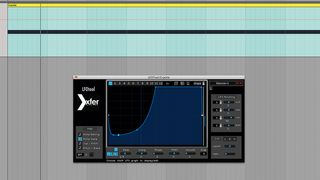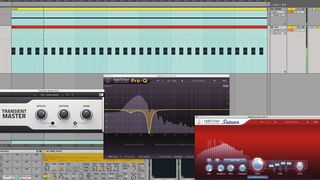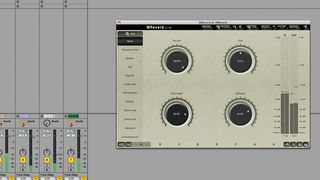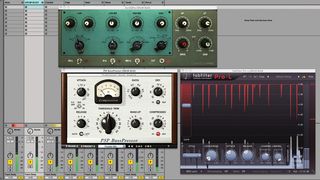Forget percussion loops and shiny drums - we're going back to house's roots with classic drum machine programming, garage-style swing and plenty of drive.
We're using TR-909 drum samples to build our beat. Notice how our kick is punchy, but doesn't feature a long tail. We'll add a weighty bass part later, so a shorter kick leaves sufficient room in the low-end to allow a big bass to provide the majority of sub power.
Velocity variations are programmed in and an MPC swing template is applied for that '90s garage-esque shuffling groove, moving every second and fourth 16th-note back a touch. Things would sound much more rigid and robotic without this effect, so be wary of keeping all your own parts locked to the grid if this is the effect you want.
For a comprehensive look at the future of retro house, check out Future Music issue 280, which is on sale now.
------------------------------------------------------------------------------------------------------------

Step 1: To lay down an initial foundation for our drum groove, we loop up a sample of some crusty vinyl crackle to create the illusion that our track is sampled from a record. Some subtle sidechain-esque volume pumping gives this noise some rhythmic movement.

Step 2: A TR-909 kick drum, layered with a short transient click sample, provides the punchy 4/4 backbone for our retro house rhythm. Processing-wise we apply some front-end snap with a transient shaper, some EQ to remove boxy mids, and tape saturation for grit.

Step 3: A clap sample, again from the TR-909, is placed on beats 2 and 4 of each bar. Transient shaping and tape saturation add crack and drive, and we also use our DAW's track delay to pull the clap back by 5ms for more groove.

Step 4: Now we program in the rest of our 909 drums. The open hi-hat sits on the offbeat, while closed hats, rimshots and ghost snares fit around the main hits. The groove of an MPC swing template is applied to the MIDI notes for more of a shuffling garage vibe.

Step 5: Everything's sounding extremely dry, so we set up some room reverb on a return channel and send our hi-hat, rim and snare signals to this channel. We also add in a shuffling tambourine loop low in the mix to fill in any gaps in the rhythm.

Step 6: Finally, we group all of our drums - except the kick - to a group buss. Here we use some Pultec-style EQ, subtle buss compression and peak limiting to remove treble harshness, giving some unified 'old-school' warmth to the beat.

